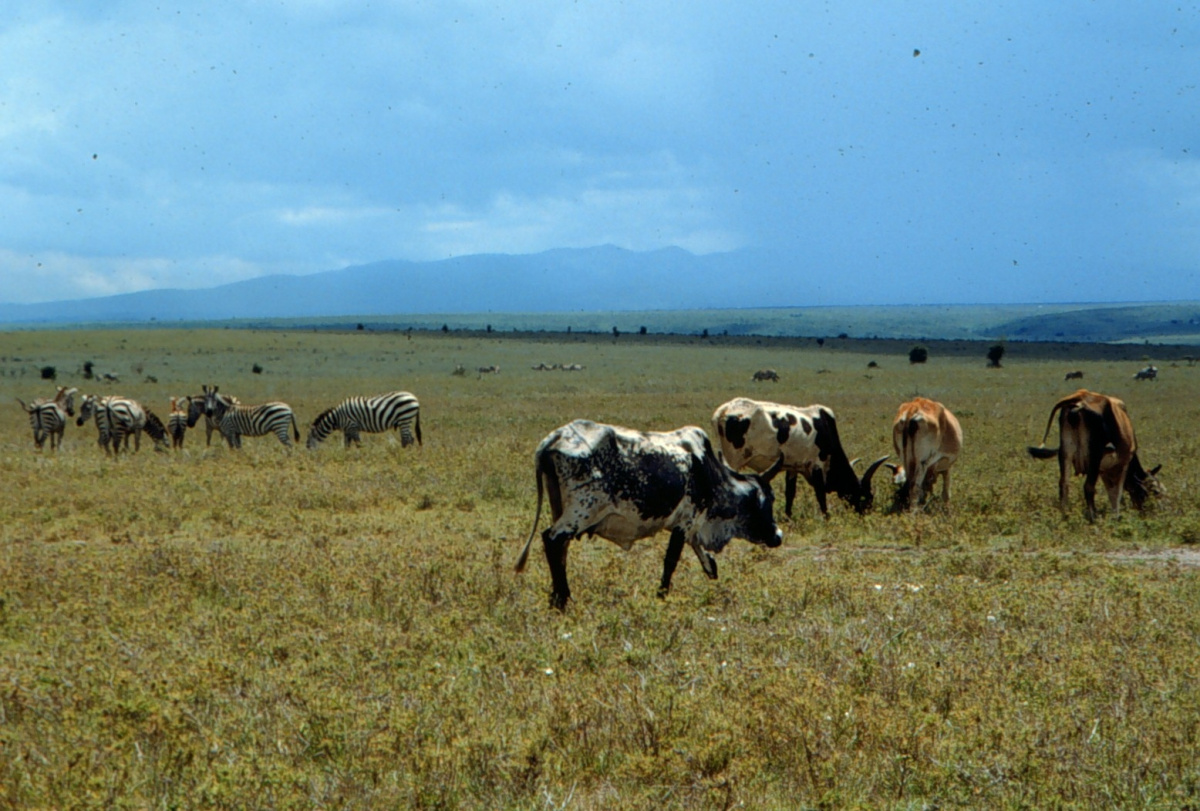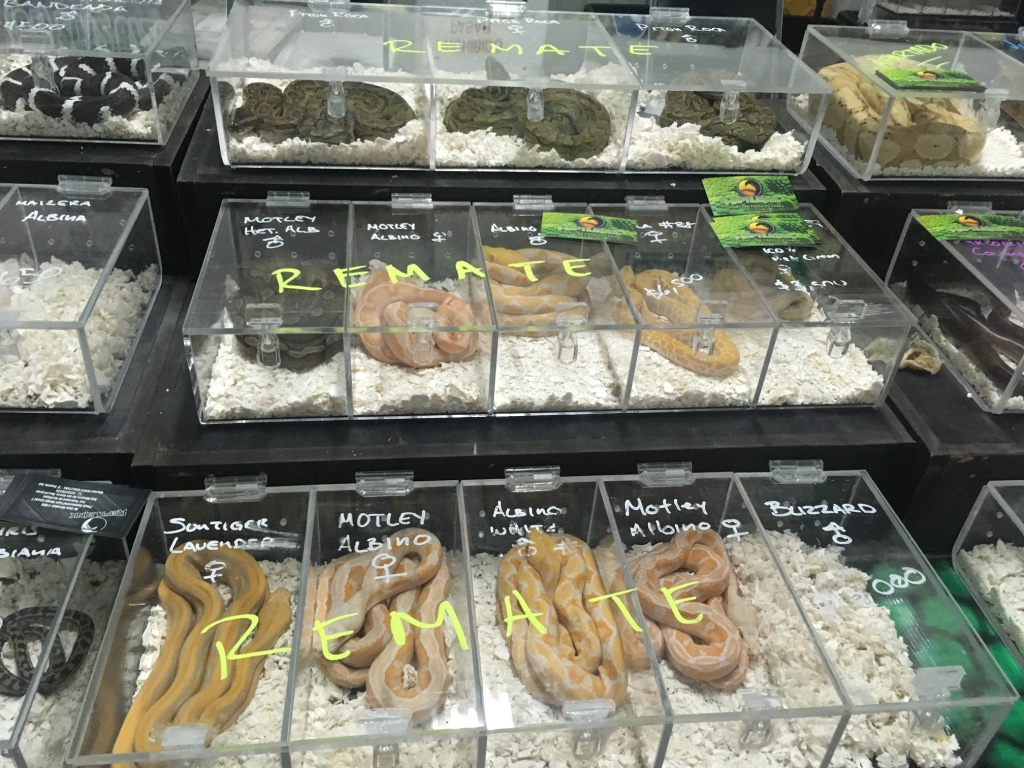Wildlife an infrequent source of human illness: IUCN report
Gland, Switzerland, 3 February 2022 (IUCN) – A new IUCN report by the Species Survival Commission finds that contact with and trade of domesticated animals and their products are by far the most frequent source of recurring human illness. While less evidence exists tracing zoonotic disease cases to direct interactions with wildlife, risks linked to poorly regulated trade remain a concern.

The new IUCN situation analysis calls for a holistic approach to detecting, monitoring, preventing, and controlling infectious diseases in human and animal populations that takes into account the numerous interactions between human, domestic animal, wildlife, and ecosystem health – an approach known as One Health.
Photo: ILRI / Dave Elsworth
The new report, titled ‘Situation analysis on the roles and risks of wildlife in the emergence of human infectious diseases’, was published by the International Union for Conservation of Nature (IUCN). It analyses more than 5,000 sources spanning three decades to examine how human interactions with domestic and wild animals are linked to zoonoses (diseases that are naturally transmissible from animals to humans, such as e.g. rabies) and emerging infectious diseases of zoonotic origin (diseases caused by pathogens that originated in animals and are now transmitted predominantly from human to human, such as e.g. HIV/AIDS or SARS-2 Coronavirus).
While the report finds that all human-animal interfaces pose a disease risk, it highlights that an estimated 99% of all human cases of recurring zoonoses come from domesticated animals and their products and within human-dominated environments, either through direct transmission or via food and water systems or insects. In contrast, the authors found published evidence for only 47 such confirmed events linked to wildlife trade over 28 years. This amounts to less than two documented cases per year, compared to an estimated total of one billion annual cases of direct or indirect zoonosis globally. However, the report notes that despite the relative scarcity of documented evidence, wildlife trade does present a risk of novel pathogen spillover, and that even single events can have major consequences.
“In the wake of the COVID-19 pandemic, a lot of attention has been paid to the spill-over of pathogens from animals to humans from the wildlife trade, which does need to be monitored and regulated much more closely and in a targeted manner,” said Richard Kock, co-author of the study and scientist at the Royal Veterinary College and the IUCN SSC Wildlife Health Specialist Group. "However, we did not find evidence that would justify far-reaching bans on the sustainable use of wildlife from a disease risk perspective. In fact, such bans could actually be counterproductive, since they may drive the trade to unknown and likely more dangerous illegal settings.”
To address and minimize risks to human health linked to both domestic and wild animals, the report highlights the need for a holistic approach to detecting, monitoring, preventing, and controlling infectious diseases in human and animal populations that takes into account the numerous interactions between human, domestic animal, wildlife, and ecosystem health – an approach known as One Health. With regard to disease risk in the context of wildlife trade specifically, the report calls for targeted, evidence-based measures such as improved surveillance of infection and zoonotic disease events, better sanitation and regular animal health checks in wildlife markets at least to the same standards used for domestic animal trade; but advises against blanket, indiscriminate trade bans.
“While many diseases may have originated from wildlife historically, the available evidence clearly points to domestic animal interactions as a much more significant source of zoonoses in humans. If we continue to increase our production of animal-based food, we will not only drive more biodiversity loss, but also further increase the risk of future pandemics. We need to rethink the way we interact with the natural world, and conserve the ecosystems that serve as natural ecological barriers that maintain the equilibrium between humans, domestic animals, and wildlife,” said Hernan Caceres-Escobar, co-author of the study, scientist at the Royal Veterinary College, Sapienza University of Rome and the IUCN SSC Wildlife Health Specialist Group.
Read the full report here: https://doi.org/10.2305/IUCN.CH.2022.01.en
The report was written by Richard Kock (Royal Veterinary College and IUCN SSC Wildlife Health Specialist Group) and Hernan Caceres-Escobar (Royal Veterinary College, Sapienza University of Rome and SSC Wildlife Health Specialist Group). Inputs and feedback were provided by an Advisory Committee composed of experts from the SSC, the IUCN Commission on Ecosystem Management (CEM), the IUCN Commission on Environmental, Economic and Social Policy (CEESP), TRAFFIC, University of Oxford, WWF International, Argentina’s National Scientific and Technical Research Council, International Institute for Environment and Development. The external revision process benefited also from the collaboration of experts from the University of Oxford and the Centre National de la Recherche Scientifique – UMR ASTRE, CIRAD, INRAE – Faculty of Veterinary Technology, Kasetsart University, Bangkok, Thailand.
Supporting quotes:
“Science does not seek definitive, inflexible, unquestionable truths – which is certainly the greatest strength of scientific inquiry. Rather, scientists gather all the available evidence and draw conclusions based on existing data, which means that policy advice informed by science will necessarily evolve as knowledge improves… That is the purpose of this document: to guide public opinion on the roles and risks of wildlife in the emergence of human infectious diseases and inspire world leaders and governments to pursue evidence-based actions,” Prof Jon Paul Rodríguez, Chair of the IUCN Species Survival Commission wrote in the foreword of the report.
“In the rush to address crises such as COVID-19 it is natural to make assumptions about the causes, effects and therefore appropriate responses to what are often complex problems. This report highlights how little evidence we have about the role of wildlife in disease transmission to humans and therefore how what may seem to be obvious actions to take may not actually address the core problem, which is unsustainable food production at a global scale” said Dilys Roe, member of the advisory group for this report, principal researcher at International Institute for Environment and Development, and CEESP SSC Sustainable Use and Livelihoods Specialist Group’ Chair.



